SEO
Does Adding a Related Post Section Help Your Blog? We Tested It
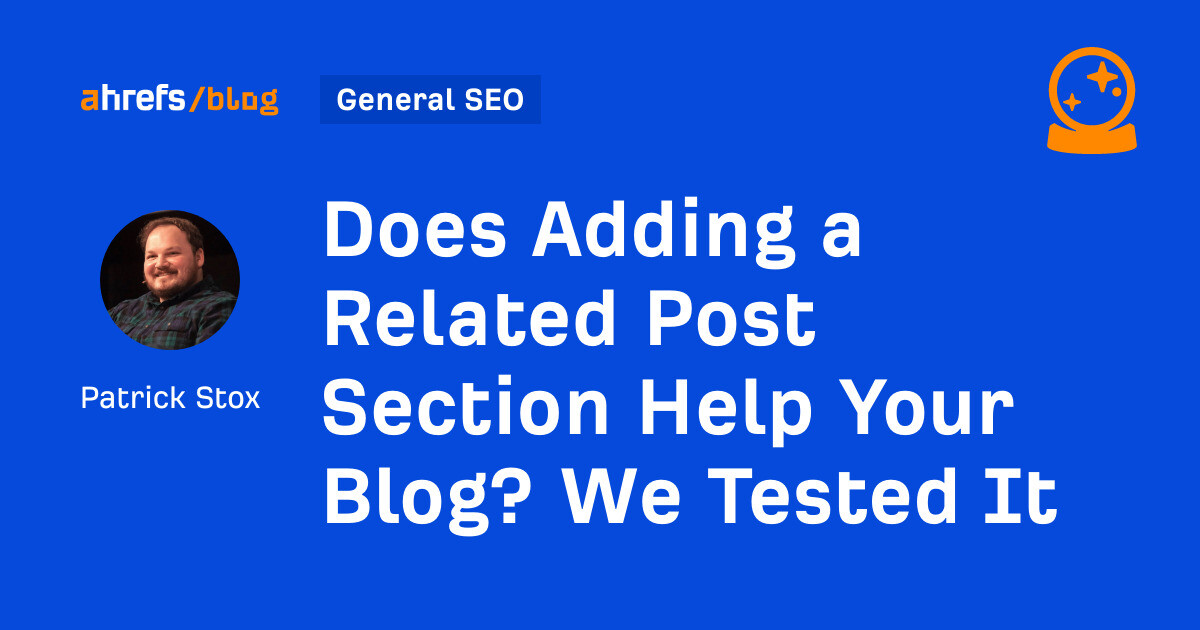
We already do a great job with internal linking on the Ahrefs blog. But we wondered if adding a related posts section would help us and whether users would use it.
Our marketing team was fairly split on whether we should have a section like this and whether it would help. I’ve had great results with this personally on sites with a lot of content, and I was convinced it would help the Ahrefs blog.
In December 2022, we added the “Keep Learning” section at the bottom of the posts using a popular related posts plugin for WordPress. Here’s what it looks like:
When I looked back to check what happened, the results were okay, but nothing spectacular. We saw a slight uptick overall, but based on the trend, I couldn’t conclude it had anything to do with the internal linking.
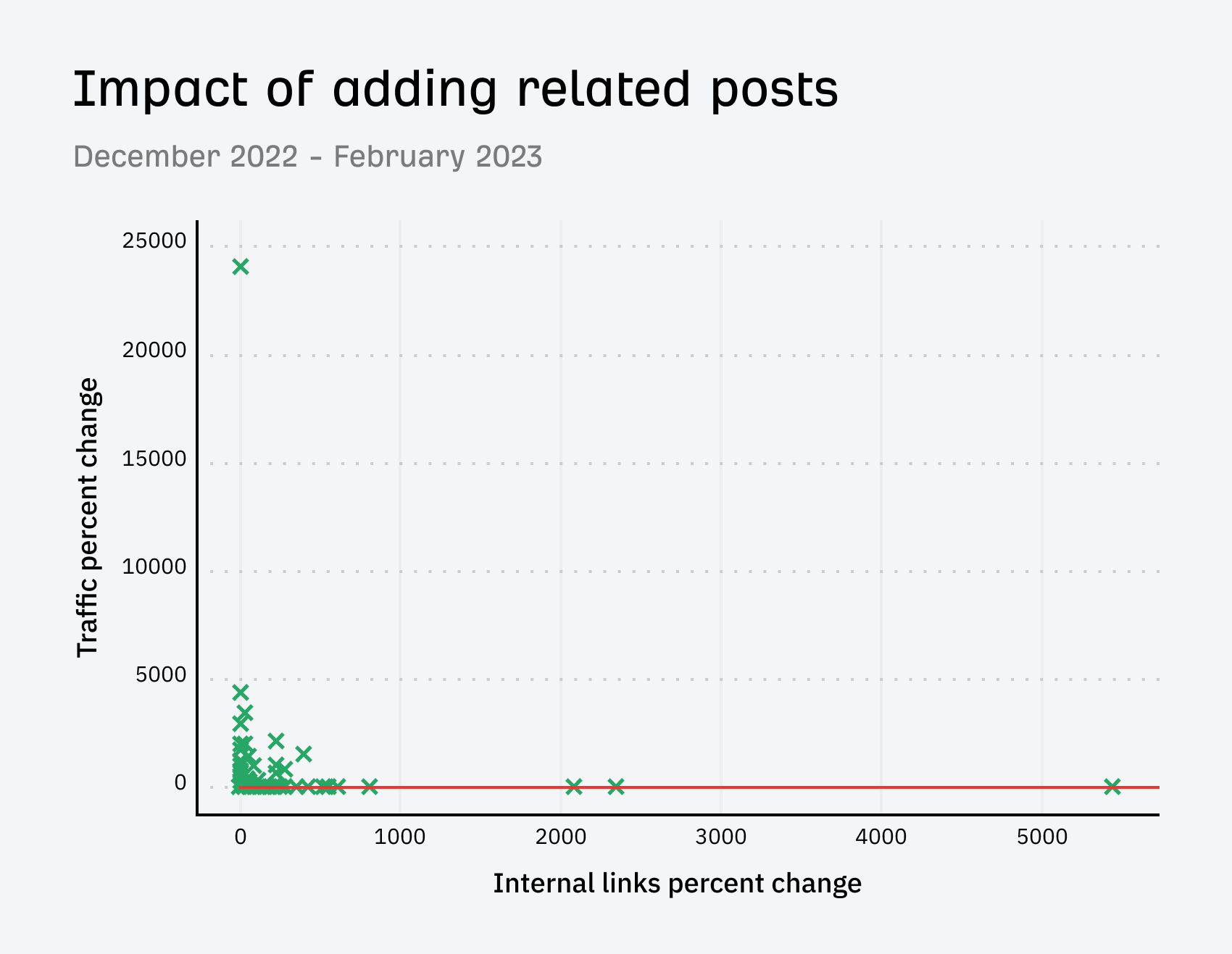

Two algorithm updates rolled out during the period we added the related posts: a Helpful Content Update and a Link Spam Update. This made the test data messy, but we decided to leave it for a while anyway.
If you want to do this kind of comparison yourself, you can pull the data directly from Site Audit. The Page Explorer report has customizable columns. All you need are the “No. of all inlinks” and “Organic traffic” columns. These are stored per crawl, so I was able to compare the data from different crawls to make the visuals for this study.


After a few months, the topic came up to remove the related posts from the site. Some people just didn’t want it, and others didn’t think it had much impact. I didn’t object to it because I was curious to see what would happen.
When we removed it, we saw some traffic losses to a lot of pages. This time, the trend indicated it was related to the internal links that were removed.


Even though we waited until after a Core Update to remove the related posts, Google rolled out another Helpful Content Update right after we removed them. Once again, the data for this test was a bit messy.
I waited a few months, and this time, I checked our analytics and noticed that when we had the related posts section, people spent more time on the site and viewed more pages. Users were actually clicking these related posts!
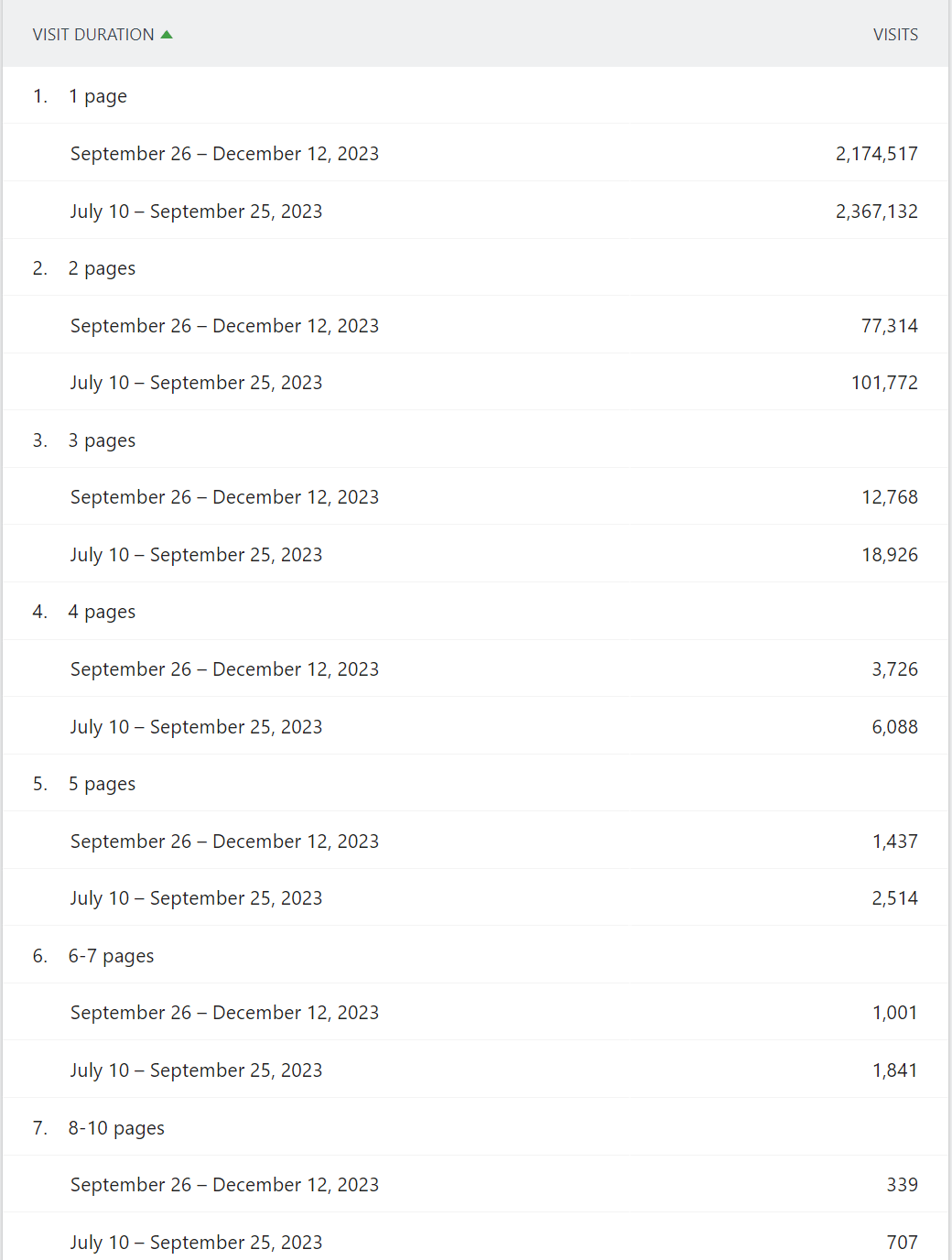

We decided to add it back, but only on English pages. We wanted to improve the match quality before adding it back to other languages.
This set up a nice split test because we could now see the difference between how the English pages were impacted vs pages in other languages.
Things looked good. We saw more traffic and it seemed to somewhat correlate to the pages that got more internal links.


This time, we had no update, so we had a real test with a control group. The results for English blog posts were positive.
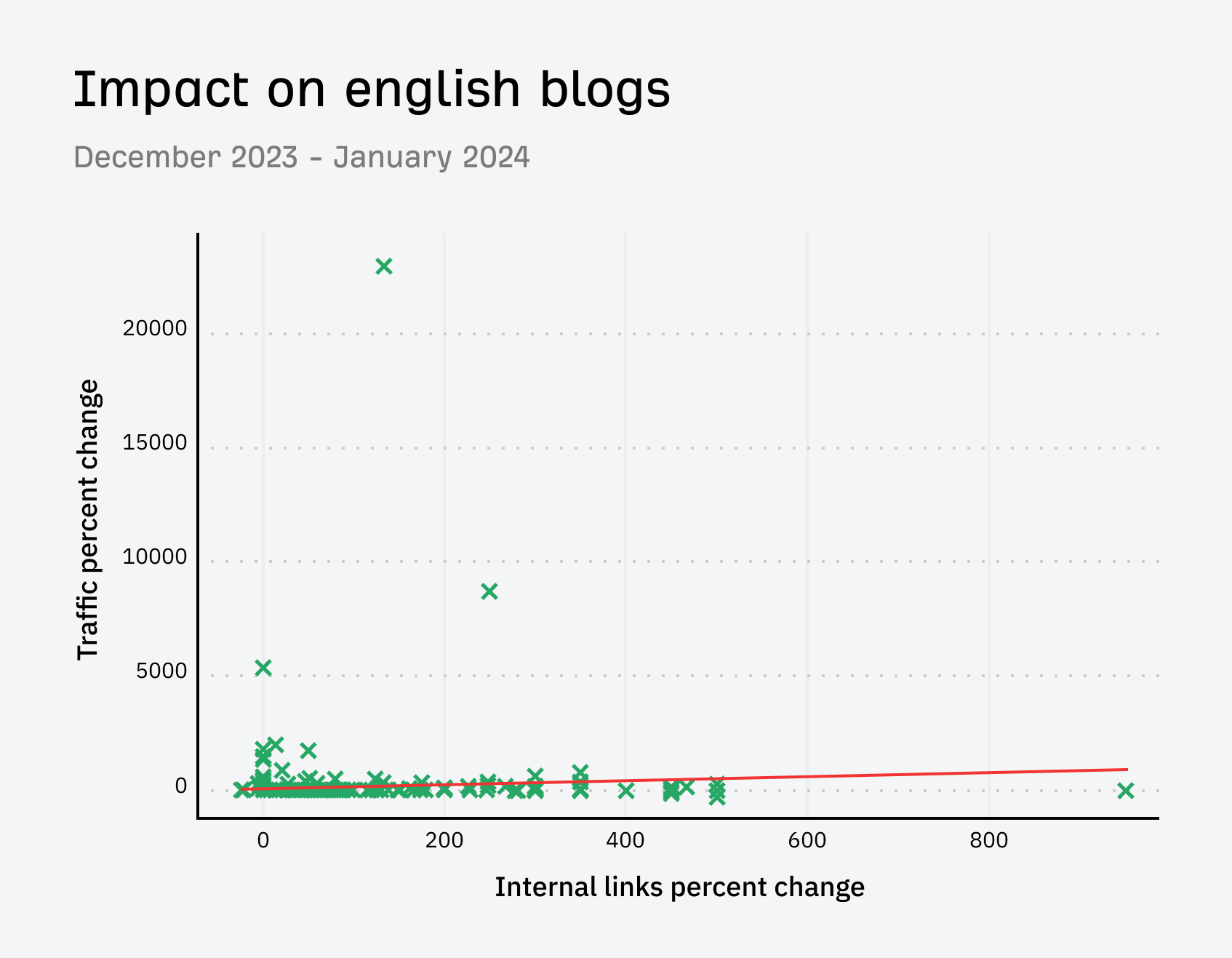

The results for the non-English blog posts were kind of mixed, but we had a lot of posts that lost traffic here.
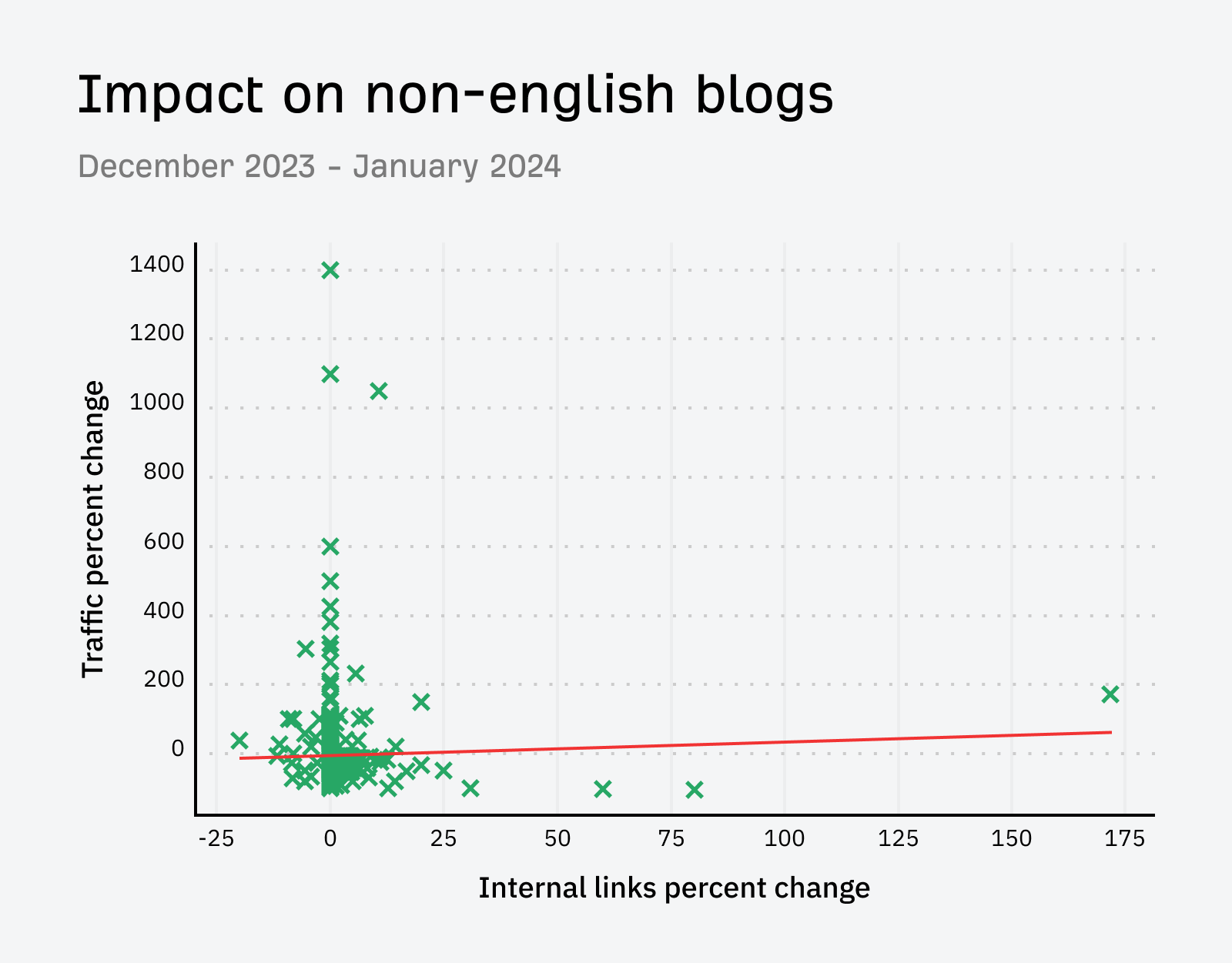

I decided to go back further, from when we removed the related posts section until now (about a month and a half after we added the section back to English blogs).
The English blogs showed a strong correlation this time. It definitely seemed that having the internal links helped with their traffic.


The non-English blogs were pretty mixed, but there were a lot of losers and not as strong of a correlation.
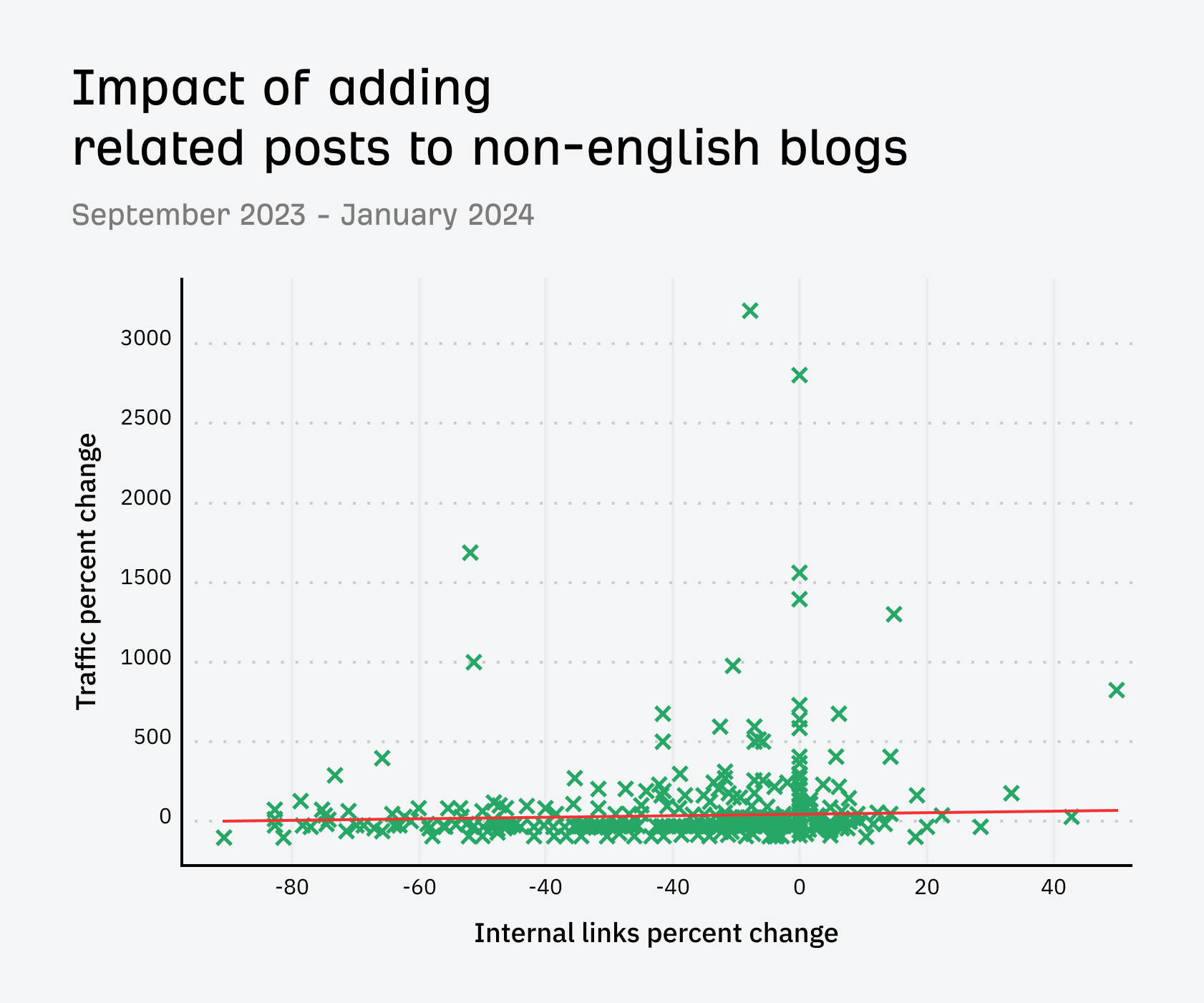

The results speak for themselves and are exactly what I expected to see. We saw some increase from having these extra internal links in the related posts section, but not a lot of impact since we already link well internally.
My best guess as to why we see some impact is that often, the related links are pieces of content that we wouldn’t naturally link to from within the blog content.
On blogs that aren’t as well optimized as ours for internal linking but have a lot of content, I would expect to see even more impact.
That’s it for now. We’ll probably add the related posts back to the non-English posts at some point this year. I’ll update the article with what happens when we do that, but I would expect a small bump for the content.
For more ideas on getting internal links, read Internal Links for SEO: An Actionable Guide.
If you want to run a test to see if adding internal links helps your content, I highly recommend creating a Portfolio that includes the pages. You’ll be able to see the impact your changes had.
I created a portfolio for some articles we made edits on and was able to easily see that the changes were positive.
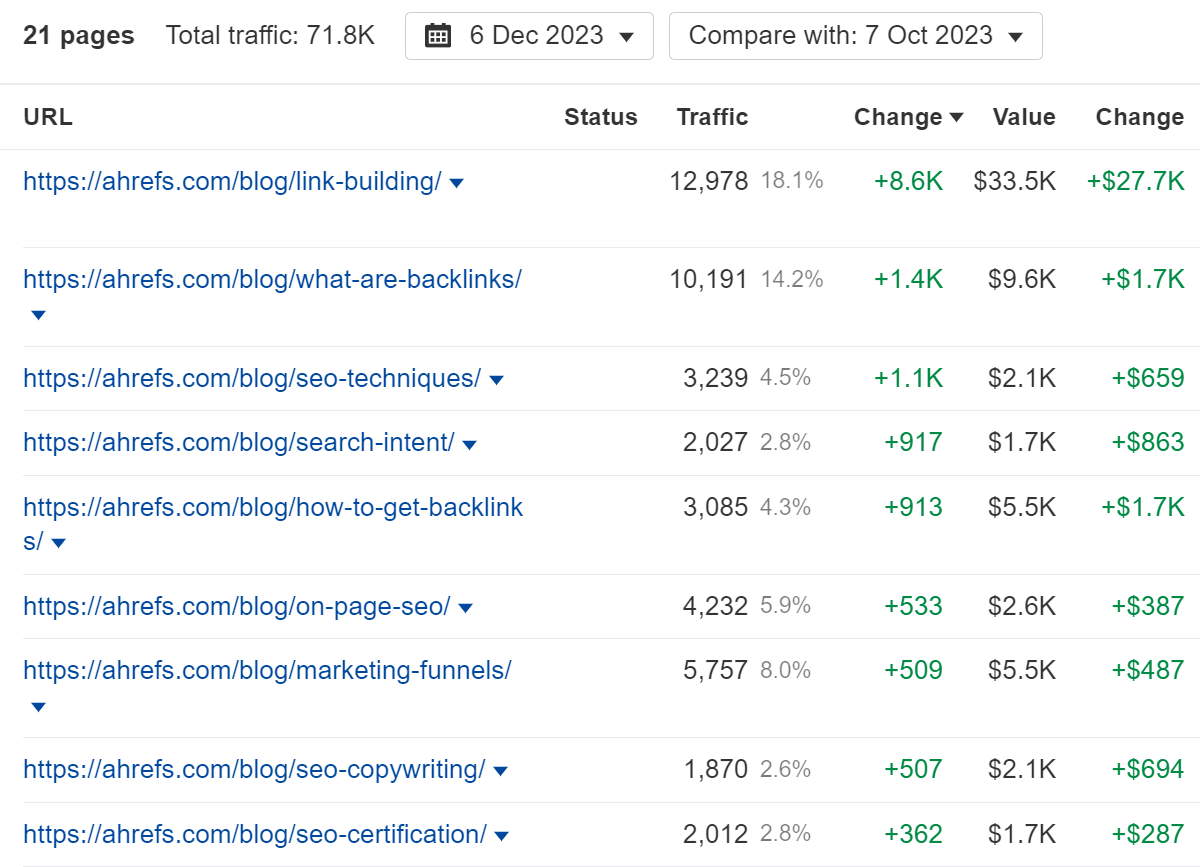

If you have questions, message me on X.


















